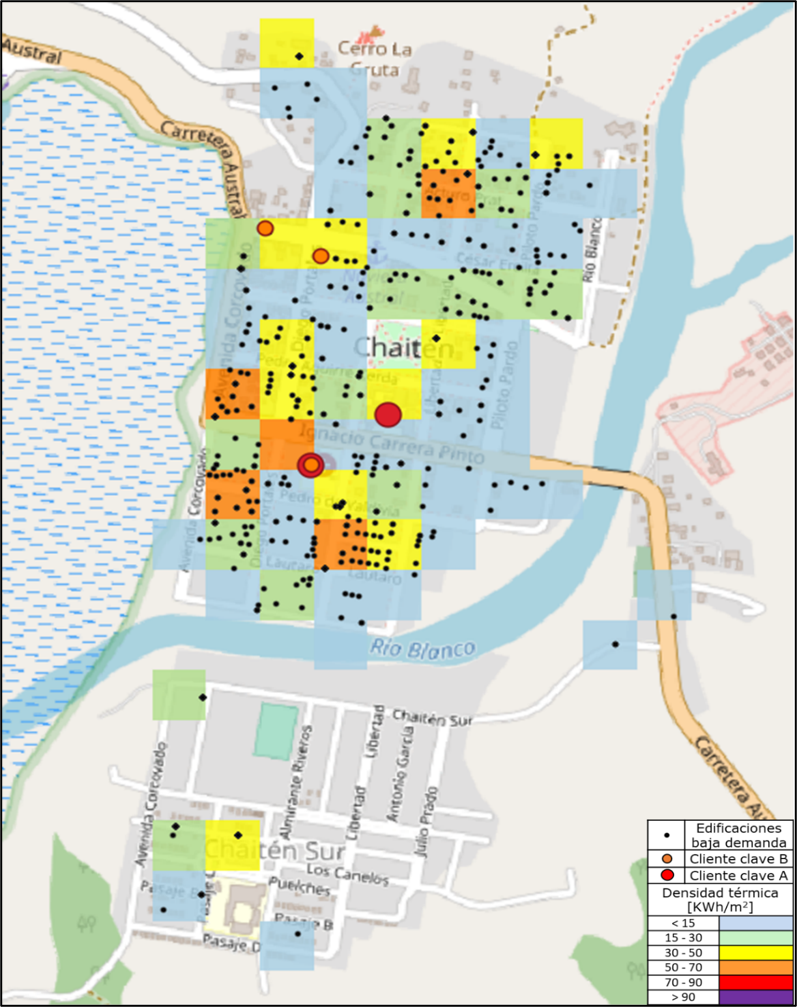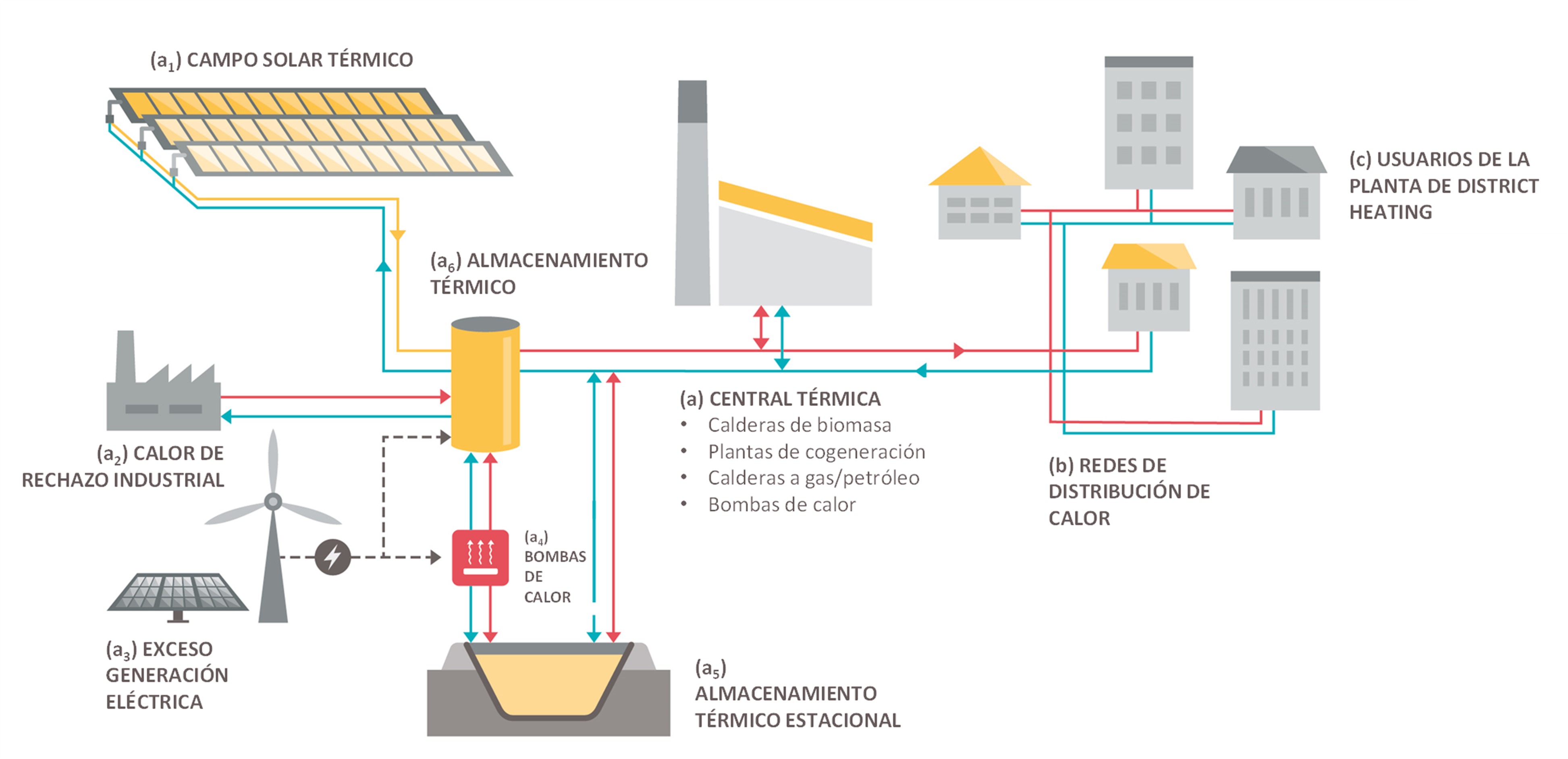One of the main advantages of Energía Distrital is its flexibility in the energy matrix of its thermal power plant, which can consider multiple inputs in terms of energy and short and long term thermal storage. Thus, energy from solar thermal and photovoltaic plants, wind power plants, industrial waste heat, highly efficient biomass boilers, heat pumps, geothermal energy, among others, can coexist in an Energía Distrital plant.
Another advantage to highlight is the fact that a District Energy plant satisfies the heat needs of multiple users, aggregating the demand in a centralized plant. This allows access to significant economies of scale in each of the technologies used, so that the total cost for the end user is similar or lower than the technologies currently used from fossil fuels or wood burning.
In a study of the potential for the application of District Energy in our country, developed by Fraunhofer Chile, it was estimated that from the Metropolitan Region to the south of the country, more than 40% of the heat demands for heating and DHW of the residential, commercial and public sectors, and more than 50% of the hot water demands in industries belonging to six different types of items of the food sector could be satisfied in a technically and economically profitable way.
In this study, more than 180 geographic zones with high technical-economic potential were identified in the different regions evaluated.
 Fraunhofer Chile Research
Fraunhofer Chile Research
